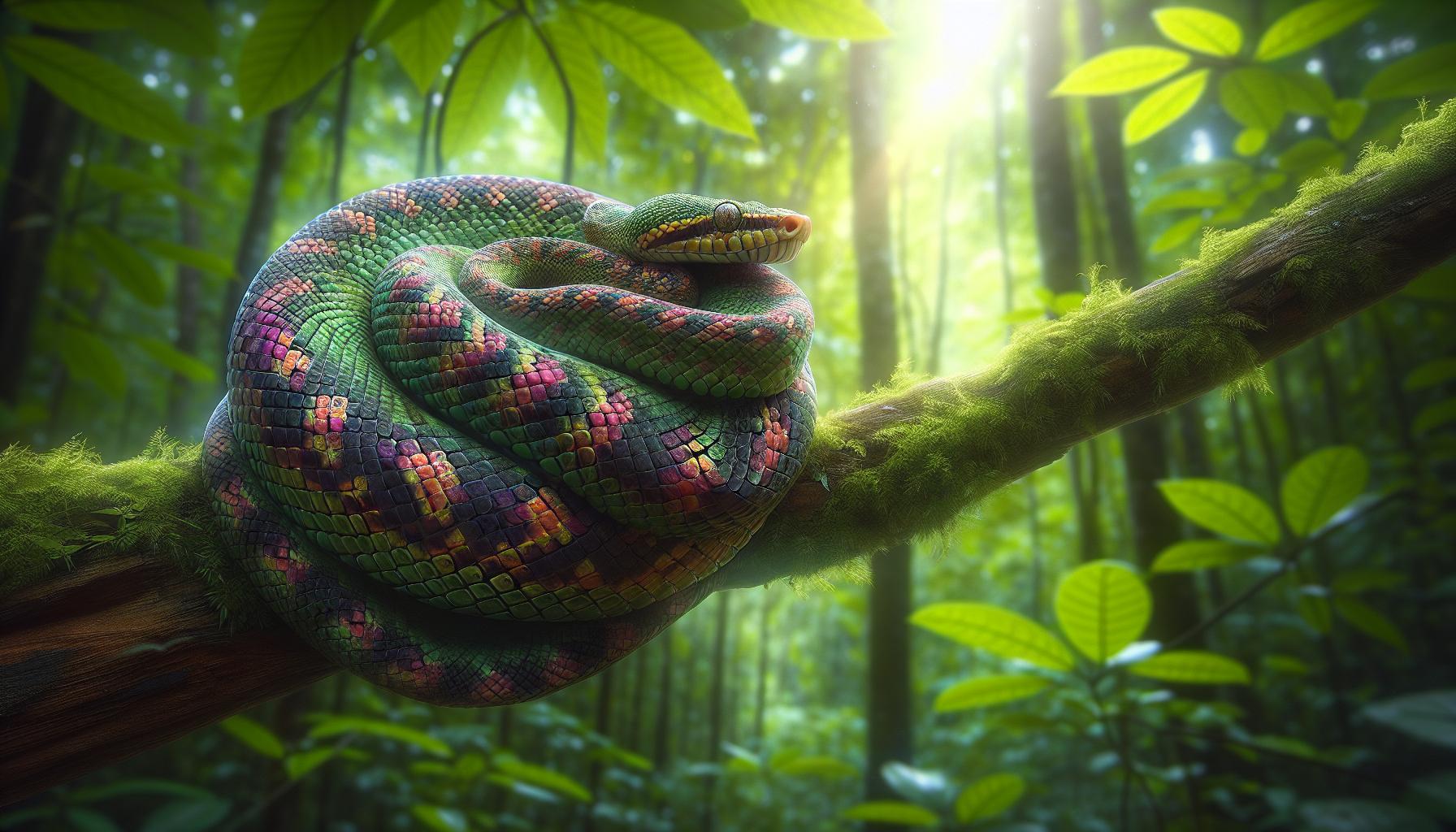When I first came across the baby snake, I was captivated by its unique appearance and intriguing behavior. These tiny creatures, often misunderstood, play a crucial role in their ecosystems. As I delved deeper into the world of baby snakes, I discovered their fascinating life cycle and the challenges they face in the wild.
Baby snakes, with their vibrant colors and striking patterns, are not just adorable; they’re also remarkable survivors. From their first moments of life, they must navigate a world filled with predators and obstacles. Understanding their habits and habitats can help us appreciate these little wonders and the vital role they play in maintaining ecological balance. Join me as I explore the captivating journey of baby snakes and uncover the secrets of their survival.
- Vibrant Appearance: Baby:Xplki1ffmew= snakes are known for their unique colors and patterns that help with camouflage and thermoregulation.
- Survival Instincts: From birth, these snakes exhibit independence and resourcefulness, navigating their environment to evade predators and find food.
- Diverse Diet and Habitat: They adapt to various ecosystems, including forests, grasslands, and wetlands, primarily feeding on insects and small mammals.
- Ecological Importance: Baby:Xplki1ffmew= snakes play a vital role in controlling pest populations and serve as prey for larger animals, highlighting their position in the food web.
- Captive Care Requirements: Proper enclosure, temperature regulation, and feeding routines are essential for maintaining their health in captivity.
Baby:Xplki1ffmew= Snake
The baby:Xplki1ffmew= snake stands out due to its vibrant colors and distinct patterns. This species, belonging to the larger family of snakes, exhibits remarkable traits that enhance its survival. From the moment of birth, it navigates its environment with agility and caution.
Baby:Xplki1ffmew= snakes primarily thrive in diverse habitats, including forests, grasslands, and wetlands. Their diverse diet consists of insects, small mammals, and occasionally other reptiles. The hunting strategy involves stealth and speed, allowing them to capture prey effectively.
In terms of reproduction, baby:Xplki1ffmew= snakes emerge from eggs after a gestation period of approximately 60 to 90 days. They display independence immediately, possessing instincts that help them fend for themselves. Despite their small size, these snakes can be incredibly resourceful, escaping predators through quick movements and camouflage.
Ecologically, baby:Xplki1ffmew= snakes contribute to their ecosystem by controlling pest populations and serving as prey for larger animals. Their role highlights the interconnectedness within food webs, emphasizing their importance in maintaining ecological balance.
Physical Characteristics

Baby:Xplki1ffmew= snakes exhibit distinct physical traits that contribute to their survival and adaptability. Understanding their size, weight, coloration, and patterns helps appreciate their unique design.
Size and Weight
Baby:Xplki1ffmew= snakes typically measure between 10 to 15 inches in length at birth. Their weight averages around 1 to 2 ounces, making them lightweight and agile. This small size allows them to navigate through dense vegetation and escape threats efficiently. As they grow, they can reach lengths of up to 2 feet, providing a balance between agility and predation efficiency.
Coloration and Patterns
Baby:Xplki1ffmew= snakes are characterized by vibrant colors and striking patterns that serve multiple purposes. Their bodies often display hues of bright green, yellow, or red, with intricate markings such as stripes or spots. These colors not only enhance their camouflage in natural habitats but also aid in thermoregulation, absorbing sunlight during cooler temperatures. The bold patterns signal to potential predators that they possess venom or toxicity, further enhancing their survival prospects in the wild.
Habitat and Distribution

Baby:Xplki1ffmew= snakes inhabit various environments that support their survival and hunting strategies. Understanding their natural habitats and geographic range provides insight into their behavior and ecological significance.
Natural Habitats
Baby:Xplki1ffmew= snakes thrive in diverse natural habitats. These include:
- Forests: Dense vegetation provides ample cover, allowing for effective camouflage against predators.
- Grasslands: Open areas enable agility, promoting quick movements essential for hunting.
- Wetlands: Abundant water sources support a variety of prey species, crucial for their diet.
These habitats contribute to their adaptable nature, facilitating their survival and reproduction while also reinforcing their ecological roles.
Geographic Range
The geographic range of baby:Xplki1ffmew= snakes extends across several regions. They are commonly found in:
- North America: Spanning various ecosystems, from coastal areas to mountainous regions.
- South America: Diverse climates support varied populations, adapting to specific local conditions.
Their wide distribution highlights their adaptability to different environments, enhancing their chances for survival and ecological contribution across vast landscapes.
Behavior and Diet

Understanding the behavior and diet of the baby:Xplki1ffmew= snake reveals critical aspects of its survival and ecological impact. This species showcases unique feeding habits and social interactions that contribute to its role in the ecosystem.
Feeding Habits
Baby:Xplki1ffmew= snakes primarily consume small insects, rodents, and occasionally other reptiles. Their hunting strategy revolves around stealth and speed, allowing them to ambush prey effectively. Predominantly nocturnal, they rely on their keen sense of smell and vision to locate food in low-light conditions. Research indicates they might eat every few days, depending on prey availability. The ability to consume a variety of food items enhances their adaptability and resilience in diverse habitats.
Social Behavior
Baby:Xplki1ffmew= snakes exhibit solitary behavior, often avoiding interaction with others of their species. They establish territories based on the availability of resources. However, during mating season, they may engage in social interactions to find partners. Aggression can arise during encounters with competitors or during the breeding process, reinforcing the importance of defining and maintaining territory. These social dynamics play a crucial role in their reproductive success and survival strategies.
Care and Maintenance in Captivity
Caring for baby:Xplki1ffmew= snakes in captivity requires proper attention to their enclosure and dietary needs to ensure their health and vitality.
Enclosure Requirements
Selecting the right enclosure is vital for baby:Xplki1ffmew= snakes. I recommend a secure, well-ventilated terrarium measuring at least 20 gallons for one snake. Use a substrate like aspen shavings or coconut fiber to promote a natural environment. Provide hiding spots using rocks, logs, or commercial reptile hides, enhancing their sense of security. Maintain a temperature gradient within the enclosure: a basking area of 85 to 90°F and a cooler end around 75 to 80°F. Use an under-tank heater or heat lamp for thermoregulation. Installing a humidity gauge helps maintain levels between 40% and 60%, ensuring proper hydration and shedding.
Feeding Guidelines
Establishing a proper feeding routine is crucial. Baby:Xplki1ffmew= snakes typically feed on small insects, pinky mice, or similar-sized prey. Offer food every 5 to 7 days, adjusting frequency as they grow. Prey should be no wider than the snake’s mid-body to prevent choking. Always ensure that food is appropriately thawed and warmed before feeding. Observing feeding behavior can provide insights into their health; avoid feeding live prey to minimize stress and risk of injury. Providing fresh water in a shallow dish for drinking and soaking promotes hydration and helps maintain appropriate humidity levels in the enclosure.
Baby:Xplki1ffmew= snakes truly captivate me with their vibrant colors and remarkable adaptability. Their journey from hatching to independence showcases their resilience in the wild. I’ve gained a deeper appreciation for their role in maintaining ecological balance as they control pest populations while being a vital food source for larger predators.
Caring for these fascinating creatures in captivity requires attention to their specific needs. Providing a secure environment and proper diet is essential for their health and well-being. Whether in the wild or in our homes, baby:Xplki1ffmew= snakes remind us of the beauty and complexity of nature, and I’m excited to continue exploring their world.

